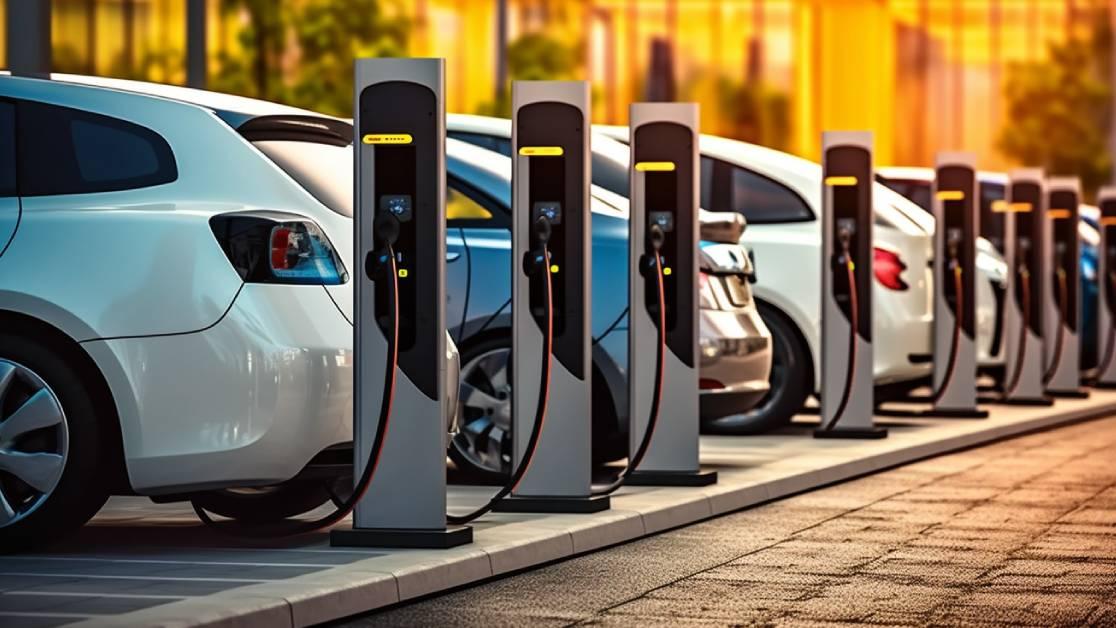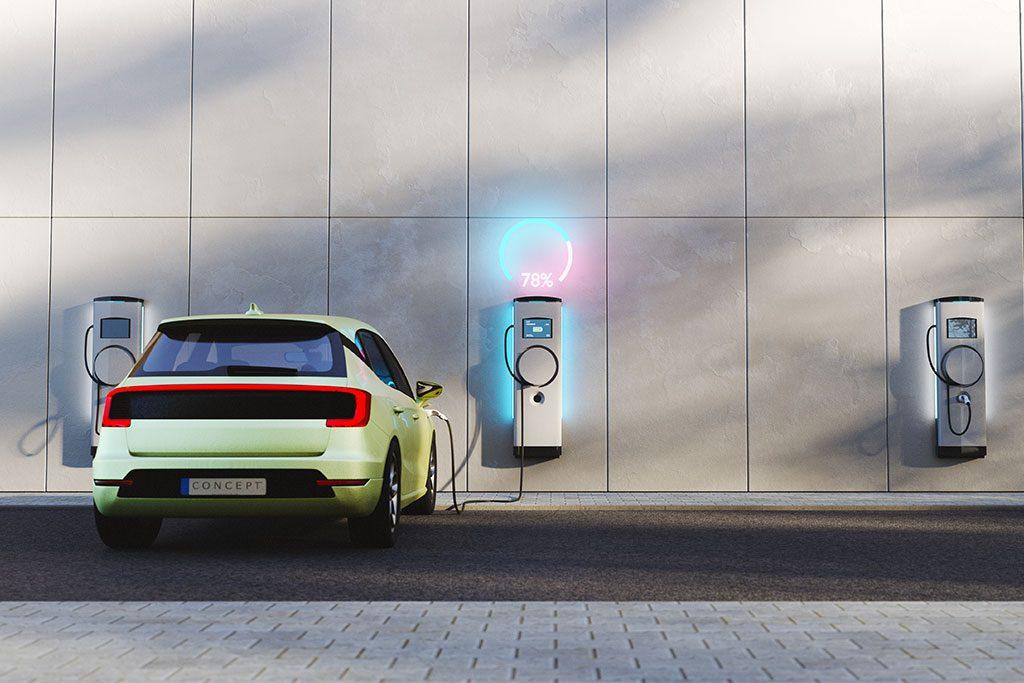In a world increasingly aware of the need for sustainable solutions, electric vehicles (EVs) are at the forefront of a pivotal transformation in transportation. As governments and industries strive to meet ambitious climate goals, the shift toward electric mobility presents a vital opportunity to reduce greenhouse gas emissions, alleviate urban air pollution, and lessen our dependence on fossil fuels. This article explores the technological advancements, policy initiatives, and consumer trends driving the electric vehicle revolution, highlighting how this paradigm shift is not only reshaping our roads but also paving the way for a greener, more sustainable future. With major automotive manufacturers investing heavily in EV technology and charging infrastructure, the journey toward electric transportation is rapidly gaining momentum, positioning electric cars as a cornerstone of the global push for environmental stewardship and innovation.
Table of Contents
- Transforming Urban Mobility through Electric Vehicle Adoption
- Analyzing the Environmental Impact of Electric Cars on Carbon Emissions
- Infrastructure Development: Building the Future of Electric Vehicle Charging
- Consumer Insights: Choosing the Right Electric Car for Your Lifestyle
- Closing Remarks
Transforming Urban Mobility through Electric Vehicle Adoption
The advent of electric vehicles (EVs) is set to fundamentally alter the landscape of urban transportation by introducing sustainability and efficiency into our daily commuting practices. Cities around the globe are beginning to embrace this transformation, which not only reduces carbon emissions but also enhances public health by improving air quality. With governments pledging to reduce reliance on fossil fuels, the shift towards electric cars is gaining momentum. Key benefits include:
- Reduced Emissions: EVs produce zero tailpipe emissions, helping to decrease urban air pollution.
- Lower Operating Costs: Electric vehicles typically have lower maintenance and fuel costs compared to traditional gasoline vehicles.
- Quiet Operation: The quiet nature of EVs contributes to a reduction in noise pollution, making cities more pleasant places to live.
Furthermore, the proliferation of electric vehicles paves the way for enhanced urban infrastructure and smarter city planning. Integrating EV charging stations into public transport hubs and enhancing grid capacity to support this infrastructure is crucial. As cities evolve to accommodate these technologies, it spurs economic opportunities through job creation in renewable energy sectors and green technology. A comparison of traditional vehicles versus electric vehicles in urban settings reveals significant differences in environmental impact and operational efficiency, as shown in the table below:
| Vehicle Type | CO2 Emissions (grams/km) | Average Maintenance Cost (per year) |
|---|---|---|
| Traditional Gasoline Car | 120 | $1,200 |
| Electric Vehicle | 0 | $400 |

Analyzing the Environmental Impact of Electric Cars on Carbon Emissions
The rise of electric vehicles (EVs) is a monumental shift in the automotive industry, largely driven by the pressing need to reduce carbon emissions associated with traditional gasoline-powered cars. One key factor in assessing the environmental impact of electric cars lies in their lifecycle emissions. While it is true that EVs produce zero tailpipe emissions, the carbon footprint from their battery production and electricity sourcing cannot be overlooked. Notably, the following elements play a crucial role in this evaluation:
- Battery Manufacturing: The production of lithium-ion batteries for electric vehicles generates significant emissions, primarily due to mining and processing raw materials.
- Electricity Generation: The source of electricity used to charge EVs heavily influences their overall emissions; renewable energy sources markedly reduce the carbon footprint, whereas coal-powered electricity increases it.
- Vehicle Efficiency: The energy efficiency of electric cars compared to their gasoline counterparts can lead to substantial emissions savings over time.
To provide a clearer picture of the emissions associated with electric cars, the following table summarizes the estimated carbon emissions throughout their lifecycle compared to conventional vehicles:
| Vehicle Type | Lifetime Emissions (grams CO2 per km) |
|---|---|
| Gasoline Vehicle | 150-180 |
| Electric Vehicle (charged with coal) | 120-140 |
| Electric Vehicle (charged with renewables) | 30-50 |
The data clearly indicates that while electric cars may initially present higher emissions due to battery production, the transition to renewable energy sources can drastically lower emissions over the vehicle’s lifetime. This paints a promising picture in the fight against climate change, illustrating that widespread adoption of electric vehicles, accompanied by clean energy strategies, holds the key to achieving significant reductions in global carbon emissions.
Infrastructure Development: Building the Future of Electric Vehicle Charging
The future of sustainable transportation hinges on the robust development of infrastructure dedicated to electric vehicle (EV) charging. As the adoption of electric cars accelerates, ensuring an accessible and efficient charging network is paramount. Governments, private enterprises, and community initiatives are coming together to establish widespread charging stations, thus reducing range anxiety and promoting the use of EVs. Major cities worldwide are committing to ambitious plans to incorporate fast-charging options along highways and within urban centers, creating a seamless experience for electric vehicle owners.
Key initiatives shaping this infrastructure revolution include:
- Expanding Charging Networks: Collaboration between municipalities and tech companies to install thousands of new charging points.
- Utilizing Renewable Energy: Charging stations powered by solar or wind energy, enhancing sustainability.
- Flexible Payment Solutions: Offering diverse payment methods, from mobile apps to subscription services, to make charging convenient.
| City | Charging Stations | Fast Charging Availability |
|---|---|---|
| San Francisco | 500+ | Yes |
| New York | 1,000+ | Yes |
| Los Angeles | 700+ | In Progress |
Consumer Insights: Choosing the Right Electric Car for Your Lifestyle
When selecting an electric vehicle (EV), understanding how it fits into your daily routine is essential. Begin by evaluating your driving habits. Assess your typical commute distance, weekend trips, and any long-distance travel requirements. Many EVs on the market today offer different ranges, with some models capable of handling over 300 miles on a single charge, making them suitable for various lifestyles. Consider the availability of charging stations in your area and whether you will charge at home, at work, or rely on public infrastructure.
In addition to range, think about your vehicle’s size, features, and budget. A compact EV may serve an urban dweller well, while families might prefer spacious SUVs or minivans. Evaluate the available technology such as advanced safety features, infotainment systems, and regenerative braking options that enhance the driving experience. Also, create a budget that includes not just the purchase price but also potential savings on fuel and maintenance, along with any available incentives or tax credits for electric vehicle ownership. Use the table below to summarize key factors that can help streamline your decision-making process.
| Factor | Considerations |
|---|---|
| Daily Distance | Evaluate your average journey length and frequency. |
| Charging Options | Home, workplace, or public chargers? |
| Vehicle Type | Car, SUV, sedan, or truck? |
| Budget | Consider purchase price and long-term savings. |
Closing Remarks
As we stand at the crossroads of transportation and environmental stewardship, the rise of electric vehicles marks a significant turning point in our efforts to combat climate change. With advancements in technology, increasing consumer acceptance, and supportive policies, electric cars are not just an alternative; they are becoming the standard of tomorrow. The shift towards electric mobility promises not only a reduction in greenhouse gas emissions but also a transformative impact on air quality and energy consumption. As manufacturers invest in innovation and infrastructure expands, the potential for electric vehicles to reshape our transportation landscape is undeniable.
However, the journey is far from over. Continued collaboration among governments, industries, and consumers is essential to address challenges such as charging accessibility, battery production sustainability, and recycling. As we move forward, the commitment to electric mobility will play a pivotal role in achieving a greener, more sustainable future. The revolution in transportation is here, and with it comes the opportunity to redefine our relationship with the planet—one electric vehicle at a time.



